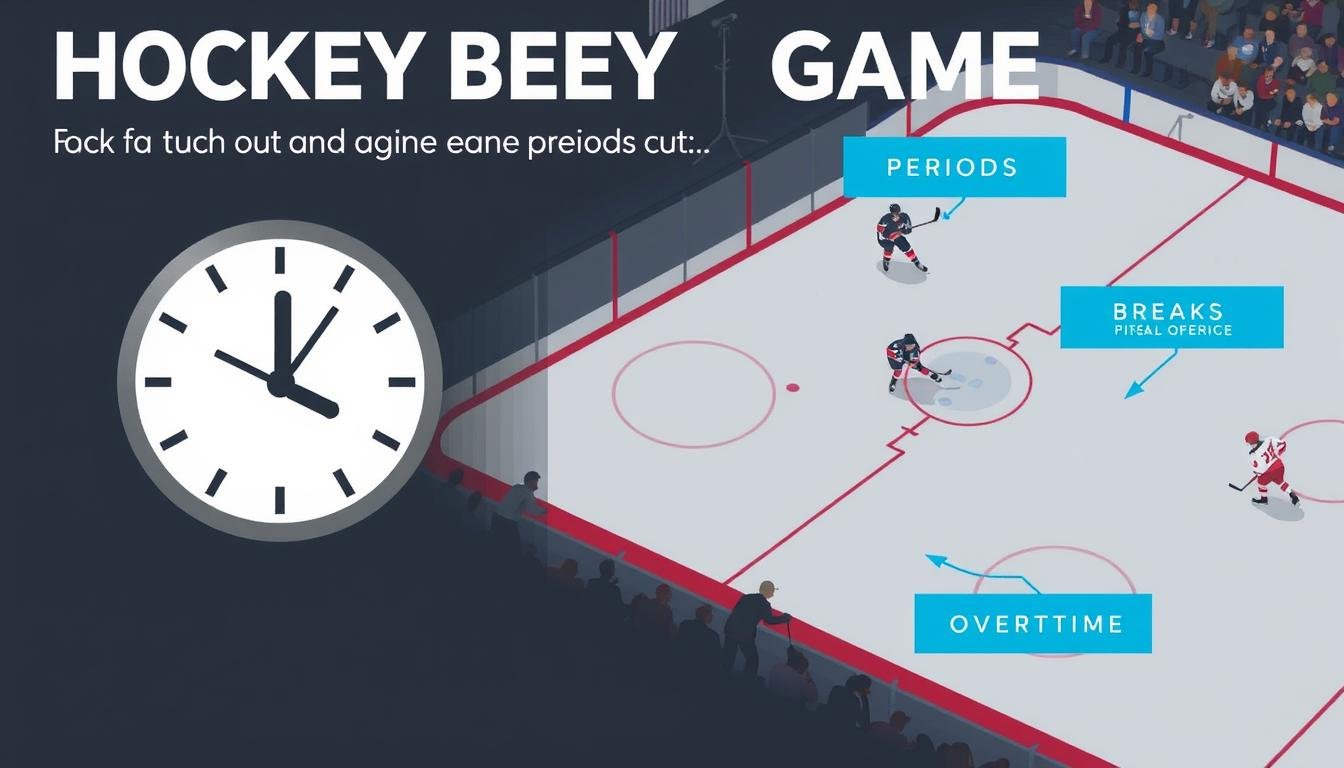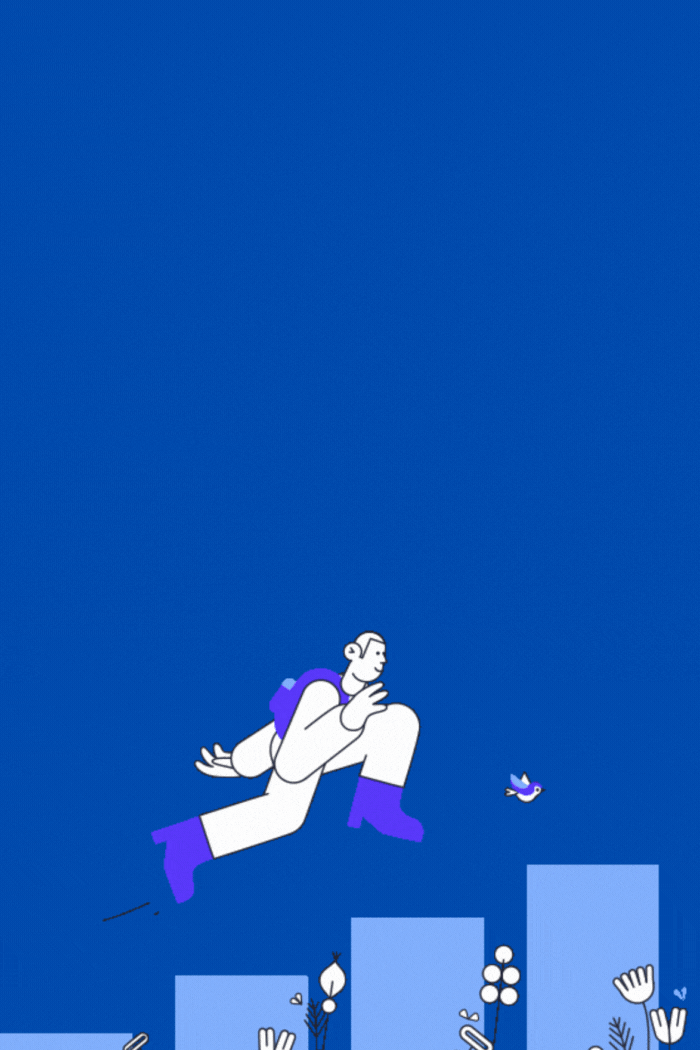Hockey games typically last 2.5 to 3 hours. This includes intense action and exciting moments for fans and newcomers alike.
The actual playing time is 60 minutes. Breaks, overtime, and stoppages can make the event longer.
Games have three 20-minute periods. Intermissions and possible overtime add to the total duration.
NHL games offer a fast-paced, thrilling experience. Fans enjoy strategic play and unexpected moments throughout the game.
Penalties and TV broadcasts can affect game length. Game intensity also plays a role in timing.
Understanding game timing adds depth to your viewing experience. It helps both seasoned fans and curious newcomers enjoy the sport more.
Understanding the Basic Structure of Hockey Games
Hockey games have a unique and exciting structure. The NHL game has three 20-minute periods, totalling 60 minutes of play.
Between periods, there are 15-18-minute breaks called intermissions. During these breaks, players rest, coaches plan, and arena staff fix the ice.
During these breaks, fans can get snacks or watch shows. They can also talk about the game’s best moments.
If the game is tied after three periods, it goes to overtime. Regular-season overtime lasts five minutes and uses sudden-death rules.
The first team to score in overtime wins. If no one scores, a shootout decides the winner.
Hockey’s timing makes it unique. Each period is full of action and excitement.
Knowing the game structure helps fans enjoy hockey more. They can see the strategy and energy in each play.
Official Game Length According to the NHL
NHL games follow a set format. They have three 20-minute periods, totalling 60 minutes of playtime.
The game clock stops during certain moments. This happens when players commit penalties, or the puck leaves play.
If the game is tied after three periods, it goes to overtime. Regular season overtime lasts five minutes and uses sudden-death rules.
In playoffs, overtime periods are 20 minutes long. These continue until one team scores.
Referees carefully watch game time. They make sure each period has 20 minutes of active play.
A typical NHL game lasts about 2.5 hours. This includes breaks and possible overtime.
These timing rules add to hockey’s excitement. They help create the sport’s thrilling and unpredictable nature.
How Long Are Games in Different Leagues?
Hockey game lengths differ across leagues. The AHL matches the NHL with three 20-minute periods, totalling 60 minutes.
Professional leagues keep consistent timing. This keeps fans engaged and players challenged.
International hockey has unique timing rules. Olympic and other tournaments may have different overtime formats.
Youth hockey games are shorter. They fit younger players’ energy levels and growth needs.
Games for kids can last 36 to 54 minutes. Younger groups have shorter periods and special rules.
All leagues share a basic structure. They have three periods, breaks, and possible overtime.
Pro leagues stick to set game lengths. Youth and international games are more flexible.
Knowing these differences helps fans enjoy all levels. Each league brings its style to game timing.
Factors Affecting Game Duration
Hockey games can last longer than expected. Delays happen due to various unexpected events during the match.
Penalties can add extra minutes to the game clock. Each infraction extends the overall match duration.
Video review has become crucial in hockey games. Referees examine controversial plays to check for infractions or goal-scoring challenges.
These detailed reviews can add several minutes to the game. They ensure fair play but may test fans’ patience.
Penalty impact is most noticeable during intense matches. Significant penalties or multiple infractions increase stoppage time.
Power plays from penalties create strategic pauses. These pauses can extend the game’s total duration.
Unexpected events, such as player injuries, equipment repairs, or arena technical issues, can further complicate game timing.
Each interruption requires careful management by officials. They work to maintain the game’s competitive integrity.
Understanding these factors helps fans appreciate hockey’s dynamic nature. Actual time on ice can vary based on external circumstances.
The Role of Television Broadcasts
TV broadcasts shape how we watch hockey today. Commercial breaks in NHL games are key to the sport’s media plan.
TV timeouts happen at set times in hockey games. They occur after goals, during breaks, or at planned moments.
These breaks add about 15-20 minutes to the game time. Hockey leagues have a plan for managing these broadcasts.
Networks choose when to show ads without stopping the game too much. Fans are used to these short pauses now.
Some think TV timeouts slow the game down. But they help pay for the sport.
The NHL balances TV needs with keeping the game fast-paced, ensuring ads don’t harm players’ performance.
Pre-Game and Post-Game Considerations
Hockey pre-game routines are key to the whole experience. Players warm up for 15-20 minutes on ice before the game.
They do special drills to get ready. These help loosen muscles and improve focus.
Fans often come early to watch warm-ups. It’s a fun part of pro hockey.
After games, players and coaches give interviews. They talk about the game for 5-10 minutes.
Fans get to hear inside info. They learn how the team feels after playing.
Teams spend a lot of time on these activities. Players prep for an hour before and after games.
This shows how much work goes into hockey. It’s more than just game time.
Fans love these extra moments. They see how hard players work off the ice, too.
Understanding Game Breaks and Intermissions
Hockey intermission activities keep fans entertained during breaks between periods. These 18-minute pauses allow for ice resurfacing and player rest.
Modern hockey arenas offer interactive experiences during breaks. Fans enjoy trivia contests, kiss-cam moments, and prize giveaways.
Home viewers can grab snacks or discuss game highlights. In the arena, fans visit concessions or join sponsored games.
Intermissions enhance the overall hockey experience. They build fan connections and create memorable moments.
These breaks offer a unique look into hockey entertainment. They keep excitement levels high throughout the game.
The Impact of Arena Atmosphere
The atmosphere of a hockey arena shapes the energy of professional games. Fans are active participants who can influence the game’s momentum.
The crowd’s roar and chants create an electrifying environment. This motivates players and drives game intensity.
The crowd’s impact on the game pace is fascinating. Loud home fans can give players an adrenaline boost.
This can lead to faster skating and more aggressive plays. NHL teams know how powerful crowd energy can be.
Stadiums design fan experiences to maximize the atmosphere. Giant screens and music transform games into immersive events.
Teams invest in creating environments where fan passion matters. Arena atmosphere isn’t just background noise.
It’s a force that can shift game dynamics. Fans contribute to hockey’s unique emotional landscape.
Common Misconceptions About Game Length
Many fans think hockey games last precisely 60 minutes. In reality, clock stoppages make games longer than expected.
A standard NHL game has 60 minutes of playtime. However, the actual elapsed time can be much longer.
Penalties, goals, and out-of-play moments extend the game. Player interactions also add to the overall duration.
Researchers found that puck-in-play time is only 15-20 minutes. This fact often surprises both casual and dedicated hockey fans.
In hockey, referees stop the clock for various reasons. These include player infractions, puck-leaving plays, and equipment adjustments.
Goal celebrations also pause the game clock. These breaks turn a simple contest into an exciting event.
Knowing these rules helps fans enjoy hockey’s complex timing. The game’s rhythm goes beyond counting minutes.
Why Hockey Is Fast-Paced
Hockey is one of the most exciting sports. Players zoom across the ice, creating an electric feeling for fans.
The game has few breaks, keeping the action going strong. Players must think fast and move quickly.
Teams switch between attack and defence in seconds. These quick changes can turn the game around fast.
Players need excellent skating skills to keep up. They train hard to stay fast and strong.
Hockey mixes skill, speed, and smart moves. This makes each game thrilling and full of surprises.
The rules help keep the game moving. Quick line changes and fast restarts keep the energy high.
Fans stay excited from start to finish. Hockey never stops being fun to watch.
Final Thoughts on Hockey Game Duration
Hockey games usually last about 2.5 hours. Knowing this helps fans enjoy the game more fully.
Preparation is key for a great hockey experience. Arrive early to soak in the arena’s atmosphere.
Get refreshments and find your seat before the game starts. Check team schedules and parking details ahead of time.
Be ready for possible game interruptions that might extend the match. NHL games can vary in length due to overtime or penalties.
Understanding these variations helps fans appreciate the sport’s unpredictable nature and allows viewers to enjoy the strategic gameplay more deeply.
Whether at the arena or watching at home, be ready for anything. This approach ensures an engaging and fun spectator experience.
FAQ
How long does a typical NHL hockey game last?
An NHL hockey game usually lasts 2.5 to 3 hours. It includes three 20-minute periods, two intermissions, and possible overtime or shootout.
Do all hockey leagues have the same game duration?
No, game lengths vary across different leagues. NHL games follow a 60-minute format, but youth and amateur leagues might have shorter periods.
How long are the intermissions during a hockey game?
NHL intermissions typically last 17 minutes. This allows time for ice resurfacing and player rest.
What happens if a hockey game is tied after regulation time?
In NHL games, a 5-minute sudden-death overtime follows regulation time. If unresolved, a shootout occurs. This can add 15-20 minutes to the game.
Do TV broadcasts affect the length of a hockey game?
Yes, TV broadcasts add timeouts and commercial breaks. These can extend the overall game duration.
How long are hockey games in international competitions?
International hockey games are similar to NHL games. They have three 20-minute periods. Overtime and shootout rules may differ between tournaments.
What factors can cause a hockey game to run longer than expected?
Multiple penalties, video reviews, and injury delays can increase the duration of a game. Extended overtime and shootouts also add to the total time.
Are youth hockey games the same length as professional games?
No, youth hockey games are usually shorter. They have reduced period lengths appropriate for each age group.
How much actual playing time occurs during a hockey game?
The actual continuous playing time is about 30-40 minutes. Clock stoppages occur for penalties, goals, and other game interruptions.
Do playoff hockey games have different time regulations?
Playoff games have similar time structures. However, overtime periods are full 20-minute sudden-death periods. This can make playoff games longer.
you may also read:Top Magic: The Gathering Cards and Accessories at Star City Games

